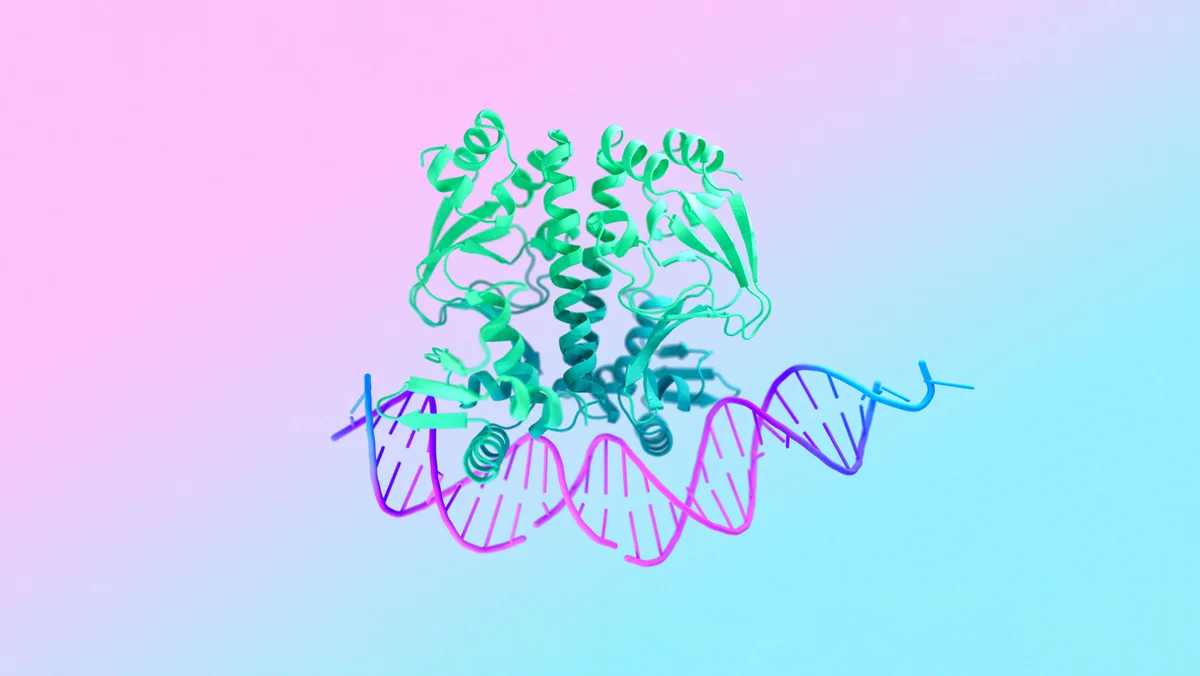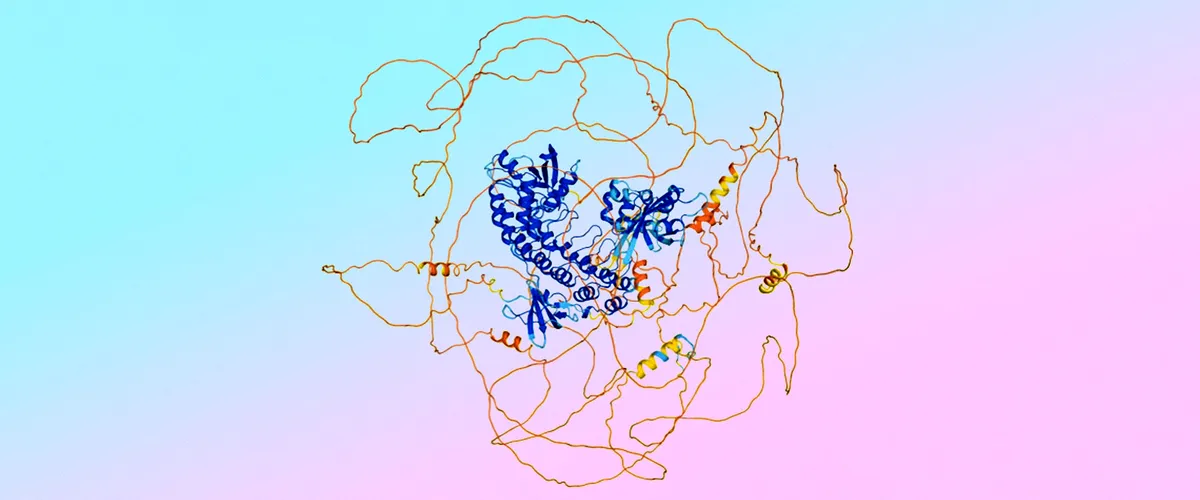Overview of AlphaFold3
What is AlphaFold3?
AlphaFold3 is the latest iteration of an artificial intelligence model developed by Google DeepMind, designed to predict the three-dimensional structures of proteins and other biomolecules. Building on the groundbreaking success of its predecessor, AlphaFold2, which revolutionized protein structure prediction, AlphaFold3 expands its capabilities to include a broader spectrum of biomolecules such as DNA, RNA, and ligands. This advancement marks a significant leap forward in our understanding of biological systems and has the potential to transform drug discovery and other fields.
Key Features and Advancements in AlphaFold3
AlphaFold3 introduces several key advancements that enhance its predictive power and scope:
- Diffusion Networks: The model employs a novel diffusion network architecture, akin to techniques used in AI image generation, to predict molecular structures with remarkable accuracy.
- Increased Predictive Accuracy: AlphaFold3 demonstrates at least a 50% improvement in predicting interactions between proteins and other molecules compared to existing methods, including significantly higher accuracy in protein-ligand interactions.
- Holistic Modeling: Unlike previous versions, AlphaFold3 can model complex interactions involving multiple types of biomolecules, providing a comprehensive view of how these molecules fit together.

Differences Between AlphaFold2 and AlphaFold3
The transition from AlphaFold2 to AlphaFold3 is characterized by several notable differences:
- Model Architecture: While AlphaFold2 relied heavily on the Evoformer architecture, AlphaFold3 simplifies this model, focusing more on pair representations and utilizing new neural network techniques.
- Expanded Training Set: AlphaFold3 has been trained on a more extensive dataset that includes a wider variety of biomolecules, enhancing its predictive capabilities.
- Broader Applicability: AlphaFold3 is not limited to proteins; it can predict structures for DNA, RNA, and ligands, making it a versatile tool in biological research.
Mechanism of Action
How AlphaFold3 Works
At the core of AlphaFold3's functionality is its sophisticated deep learning framework. The model processes input data, which can include sequences of amino acids or other molecular information, and generates predictions about the 3D structure of the molecules involved. This process involves:
- Input Processing: The model accepts raw data files containing the molecular sequences.
- Structure Prediction: Using advanced algorithms, AlphaFold3 predicts the most likely structure based on patterns learned during training.
- Output Generation: The final output includes detailed information about the predicted 3D structures, which can be validated against experimental data.
The Role of Diffusion Networks in Structure Prediction
Diffusion networks are a groundbreaking addition to AlphaFold3’s architecture. This technique starts with a "cloud" of atoms and iteratively refines the structure through a series of steps until it converges on the most accurate representation. By leveraging this approach, AlphaFold3 is able to produce highly accurate molecular models that can be used for various applications, including drug design and vaccine development.
Enhanced Predictive Accuracy and Methodology
The improvements in AlphaFold3's predictive accuracy over traditional methods are substantial. By integrating a more complex training regimen and a larger dataset, the model achieves results that often surpass those of conventional tools, such as docking algorithms. For example, AlphaFold3 is reported to be 50% more accurate than the best traditional methods on significant benchmarks.
Applications of AlphaFold3
Impact on Drug Discovery
One of the most significant impacts of AlphaFold3 is in the realm of drug discovery. The model's ability to accurately predict how proteins interact with potential drug molecules can accelerate the identification of viable drug candidates. This capability not only reduces the time required for drug development but also increases the likelihood of success in clinical trials.
Case Studies in Drug Development
AlphaFold3 has been utilized in various case studies demonstrating its practical applications in drug discovery. For instance, researchers have used the model to identify potential inhibitors for viral proteins, significantly streamlining the drug development process.
Contributions to Vaccine Research
The model has also shown promise in vaccine research, particularly in understanding how viral proteins interact with the immune system. By accurately predicting these interactions, AlphaFold3 aids in the design of more effective vaccines, as seen in studies related to COVID-19 and other infectious diseases.
Applications in Agriculture and Crop Resilience
Beyond human health, AlphaFold3's predictive capabilities extend to agriculture. The model can help predict the structures of enzymes that enhance plant resilience against pathogens, offering new insights into crop improvement strategies.

AlphaFold3 vs. Traditional Methods
Comparison with AlphaFold2: Results and Performance
AlphaFold3 outperforms its predecessor in several key areas, including accuracy, speed, and the range of biomolecules it can model. The enhancements in computational techniques and the incorporation of diffusion networks are pivotal in this performance leap.
Limitations of Traditional Structure Prediction Techniques
Traditional methods such as X-ray crystallography and NMR spectroscopy are often time-consuming and costly. These techniques can take months or years to yield results, while AlphaFold3 can predict structures in a fraction of the time, making it a game changer in the field.
How AlphaFold3 Surpasses Previous Tools
AlphaFold3 stands out due to its holistic approach to protein structure prediction. By unifying the modeling of various biomolecules, it provides a comprehensive tool that can bridge the gap between computational predictions and experimental validation.
Future Prospects and Developments
The Role of AI in Biomedical Research
The integration of AI, particularly through models like AlphaFold3, is poised to reshape biomedical research. By providing rapid and accurate predictions, AI can facilitate new discoveries and advancements in understanding complex biological systems.
Potential Innovations and Collaborations
As AlphaFold3 continues to evolve, potential collaborations with pharmaceutical companies and research institutions could lead to innovative treatments and therapies that leverage the model’s predictive capabilities.
Accessibility and Open-Source Initiatives
The recent decision to make AlphaFold3's code available for non-commercial use signifies a commitment to democratizing access to advanced scientific tools. This move is essential for fostering collaboration and encouraging innovation within the scientific community.
Challenges and Limitations
Accuracy and Reliability Concerns
Despite its advancements, AlphaFold3 is not without challenges. The model's accuracy can vary depending on the biomolecular interactions being studied, necessitating further validation and refinement.
Risks of Hallucination in Predictions
The use of advanced modeling techniques introduces the risk of "hallucination," where the model generates plausible but incorrect structures. Researchers must remain vigilant in validating predictions with empirical data.
Access Limitations and Their Implications
While the model's availability is a step forward, the restrictions on commercial use and the types of molecules that can be studied may hinder broader applications in industry settings.
Conclusion
Summary of AlphaFold3's Impact
AlphaFold3 represents a monumental leap in the field of protein structure prediction and biomolecular modeling. Its ability to accurately predict interactions among a wide range of molecules holds significant promise for drug discovery, vaccine development, and agricultural research.
Future Directions for Protein Structure Prediction and Drug Discovery
As advancements in AI continue, models like AlphaFold3 will likely become integral to biomedical research and development. The potential for further innovations and collaborations will undoubtedly lead to groundbreaking discoveries in understanding life at the molecular level.
Key Takeaways:
- AlphaFold3 is a revolutionary AI model for predicting protein and biomolecular structures with unprecedented accuracy.
- Diffusion networks enhance predictive capabilities, allowing for modeling complex interactions between various biomolecules.
- Applications span drug discovery, vaccine development, and agricultural research, showcasing the model's versatility.
- The model surpasses traditional methods in speed and accuracy, reducing drug development timelines significantly.
- Accessibility initiatives aim to democratize the use of AlphaFold3, fostering collaboration and innovation in scientific research.
